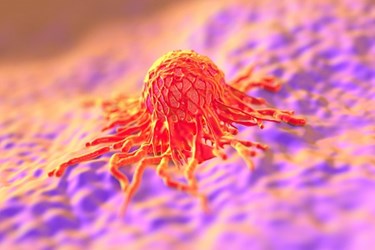The 2015 NSCLC Immunotherapy Race Is Already Narrowing
By Anna Rose Welch, Editorial & Community Director, Advancing RNA

It’s been a productive beginning of the year in the realm of immunotherapy. Recent headlines have boasted news about some major players making waves in immunotherapy — especially in the NSCLC treatment area — which will not only benefit a large number of patients, but will also give productive players a slice of what’s expected to be a very lucrative market.
Let’s review a few of the players I’ve come across lately that have been working in the NSCLC space:
- First up, we have Merck’s Keytruda, which won a nod from the FDA to treat melanoma in September 2014. The company sent some ripples through the industry last week when it announced it would be seeking approval in NSCLC much sooner than expected — hopefully by mid-year. So far, early trial results show that taking the drug has helped shrink tumors in 20 percent of patients. Merck and Eli Lilly also teamed up this past week to test Keytruda in combination with Lilly’s galunisertib in NSCLC.
- Last week, Bristol-Myers Squibb halted its Phase 3 trial of Opdivo in lung cancer patients because the independent Data Monitoring Committee (DMC) found the treatment was more effective in extending survival compared to docetaxel chemotherapy. Like Keytruda, Opdivo has also received FDA approval for melanoma. The company has not yet indicated when it plans to file for approval of Opdivo in NSCLC. Eli Lilly and BMS are also exploring Opdivo in combination with several different Lilly candidates.
- In May, AstraZeneca initiated a Phase 3 trial of MEDI4736 in NSCLC. The PACIFIC trial will determine the drug’s effect on overall and progression-free survival in NSCLC patients who have not seen their cancer progress following treatment with chemoradiotherapy. The company is also exploring its immunotherapy drugs in combination with other AstraZeneca drugs.
- Roche is working on its PD-L1 candidate, MPDL3280A, which has undergone testing in both lung cancer and bladder cancer. In the fall of 2013, the drug showed efficacy in an early stage trial for NSCLC, shrinking tumors in 23 percent of the 53 patients enrolled. Pivotal data from these trials is expected early this year and could be used to support an application for approval in the second half of the year, says Reuters. Like AstraZeneca, Roche is also exploring combinations that could include the 20+ molecules in its immunotherapy pipeline.
- Boehringer Ingelheim joined forces with CureVac in September 2014 to develop CureVac’s CV9202 mRNA vaccine and study its effects on various forms of NSCLC in combination with afatanib and chemo-radiation therapy.
- Pfizer teamed up with Merck KGaA in November 2014 to develop PD-L1 antibody MSB00010178C, which demonstrated a complete response and partial responses in NSCLC patients enrolled in an ongoing Phase 1 trial. The two partners will be testing this candidate as a monotherapy and in various combinations to treat multiple types of cancer.
- While it’s not a success story, GSK also took a stab in the space, making headlines in April 2014 when its MAGE-A3 immunotherapy candidate failed to be effective in NSCLC.
And these candidates are just in the lung cancer space. Over the past year, there have been many headlines calling attention to the industry’s interest in immunotherapy. Of the 374 experimental cancer drugs in trials, 25 to 30 percent are immunotherapies, the IMS Institute for Healthcare Informatics reports. Amgen, Novartis, and Janssen, among others, are all at work in the immunotherapy space to treat a variety of cancers.
According to Bloomberg, while 2014 was the year immunotherapies began proving their worth, 2015 will be the year of winners and losers as the drugs continue to reach the market. As Michael Girodano, head of BMS oncology and immunology, told Bloomberg, “I think 2015 is the end of the beginning in the story of immunotherapy.”
The recent successes of Merck and BMS suggest Girodano is on the mark, especially for NSCLC. However, it’s hard to say which treatment would be the “winner” if they are both released around the same time. Sanford Bernstein analyst Tim Anderson told the Wall Street Journal blog it will all depend on if the drug is indicated as a second or third-line treatment, and which of these labels has the larger patient population. By 2016, Anderson expects the playing field to level as more players enter the market.
